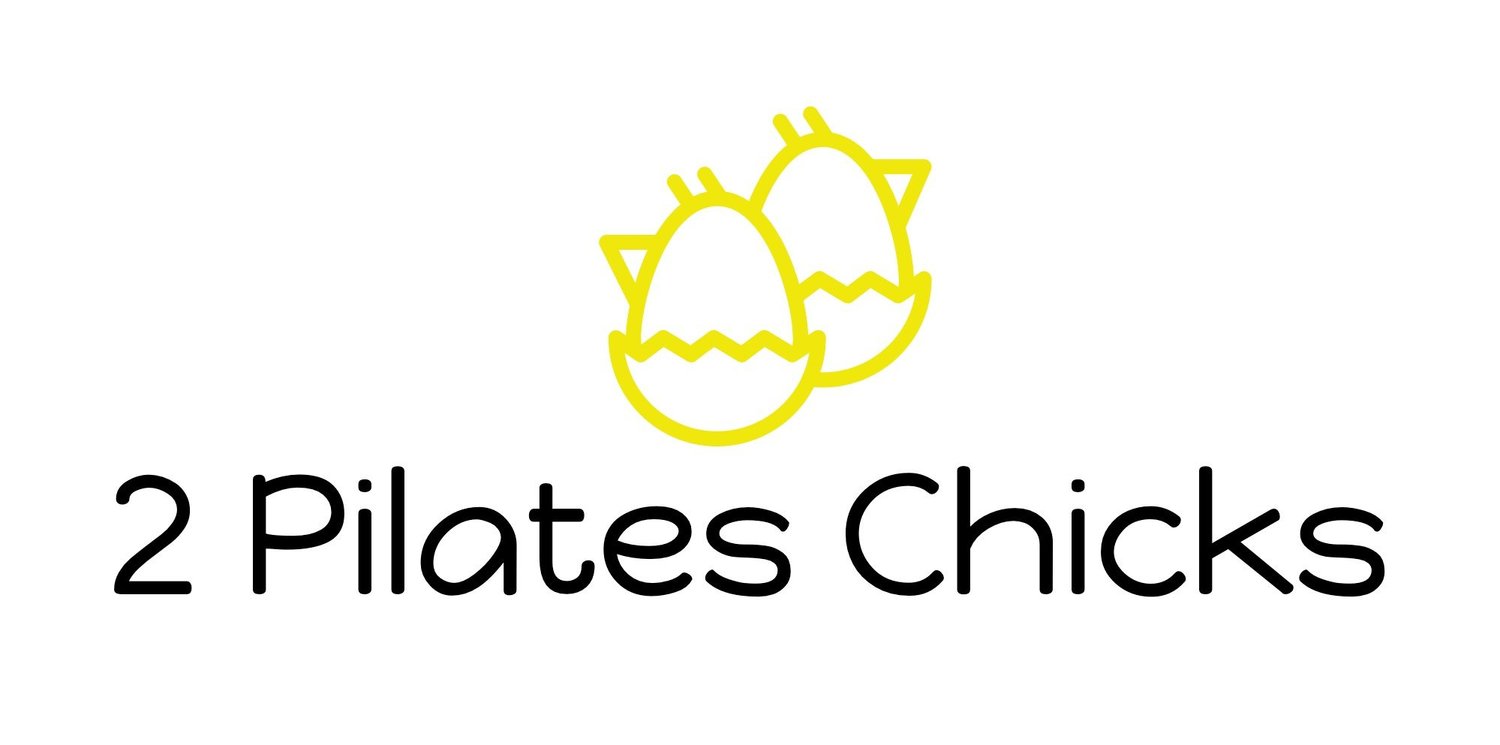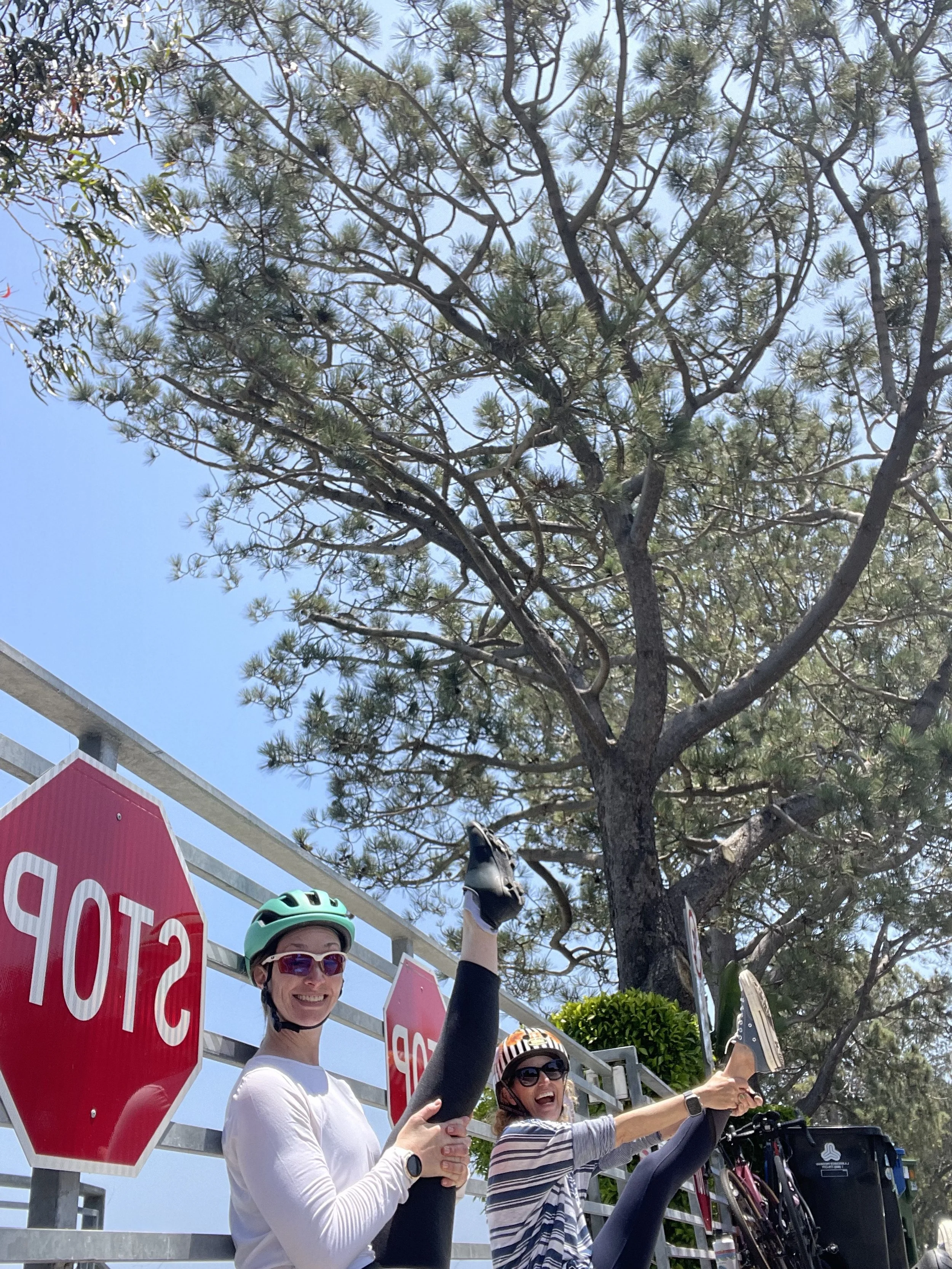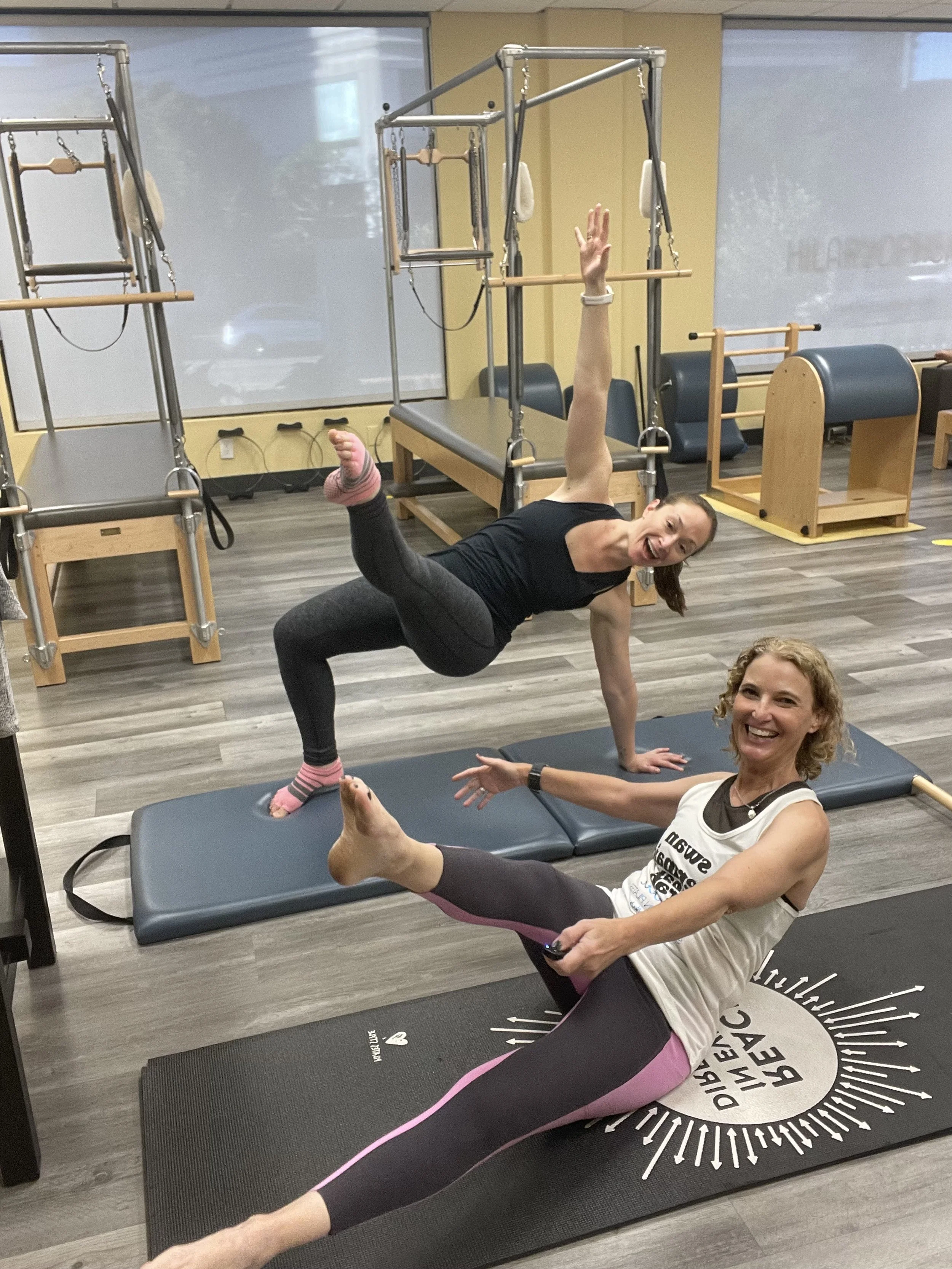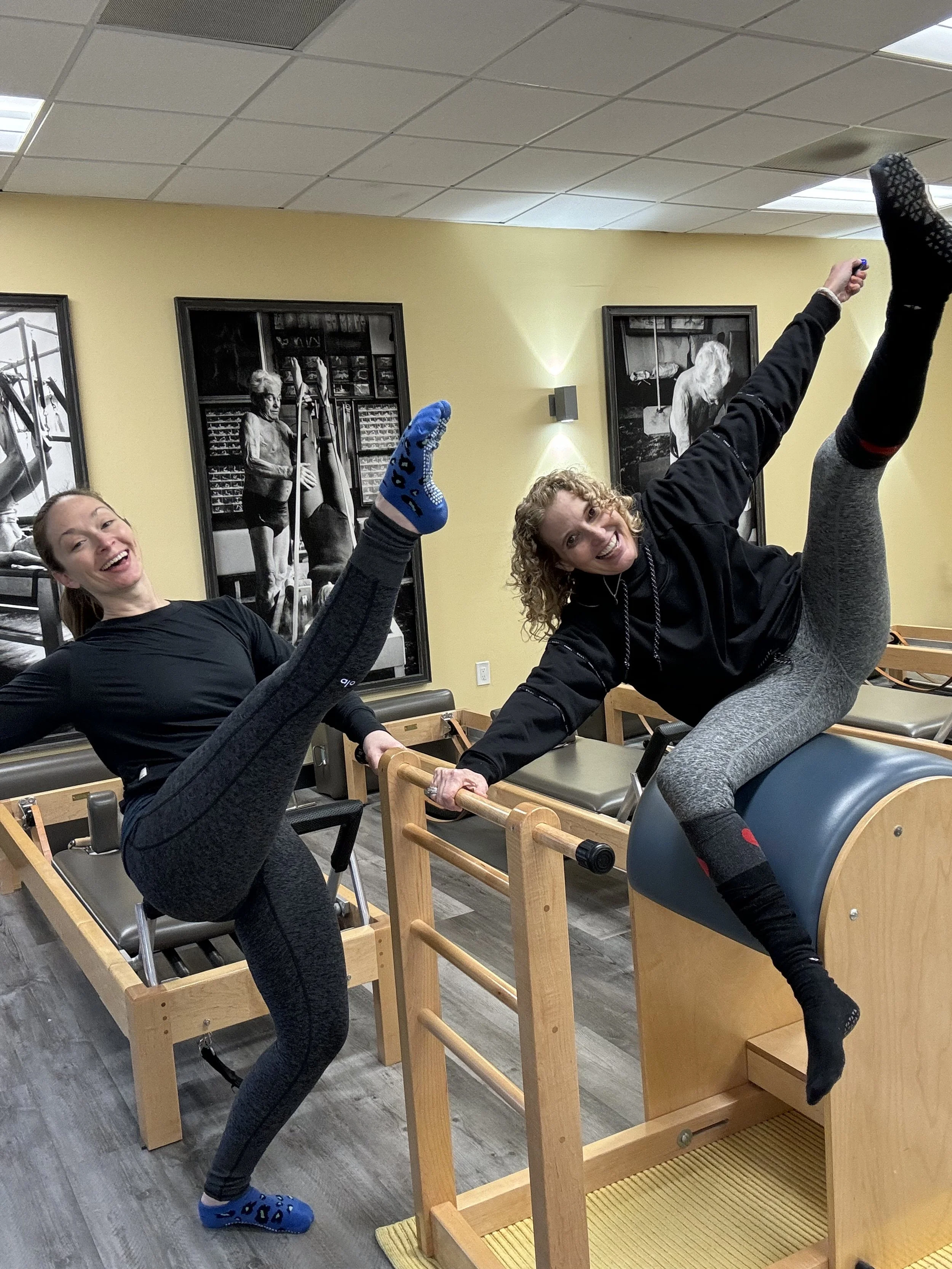Do you know what Pilates experience you are heading into?
When we say we teach Pilates, what are we actually advertising to our clients? Do our clients know what types of Pilates classes they most prefer? How do we know what we're getting when we sign up for a Pilates class?
Our podcast season 4 episode 9, "Pilates in all its Formations", we discuss the many varieties in types of Pilates classes within the Pilates industry, what that means for teachers, how we organize our field with all the variety, how to properly advertise, and what that means for clients.
This episode was inspired by an article called the" Pilates Reformation" by Carla Mullins, a Pilates teacher in Australia. This article digs into these same ideas as we discussed in the episode. There is a lot of fighting within the Pilates profession over what constitutes as Pilates, what doesn't count as proper Pilates, and what is "true" Pilates. However, in this article, even though Mullins describes the current state of the industry as quite wide-spread, almost like a wild west of Pilates, she doesn't express any negative reactions to the many variations of classes. Instead of arguing that one type of class is the correct one, she simply states that there are many types of Pilates classes now offered for clients so as teachers we should be more aware of how we are advertising ourselves to be clearer for clients so they know what they're getting when signing up for a session, and as an industry we should be more aware of how we are regulating certifications.
We need regulation and accredited certifications in Pilates in order to manage teaching credentials and to support and elevate the industry. Pilates needs the same standardization as other fitness and health practices to improve recognition, respect, and legitimization for teachers.
We need to acknowledge that there are clients for every teacher and style of classes, but not every teacher or style is right for every client, so we can use our foundational knowledge learned in our various training programs and teach authentically to our unique philosophies of the method while still imparting a positive impact on our clients through proper education and accredited certifications. Some clients will prefer classical sessions, while others prefer more traditional, contemporary, or Pilates-based therapeutic sessions, while others want pop-fitness group classes, Lagree-based classes on Megaformers, or even what Mullins describes as "reformer fitness", and fusion classes.
So instead of arguing amongst ourselves over what is right or wrong in Pilates, we should simply be clearer in what we're offering our clients. When a client is referred to Pilates by a physician or physical therapist, they are likely referring to a therapeutic session, or more traditional Pilates, whereas someone looking for general fitness will prefer either traditional or pop-fitness Pilates classes. If teachers can be more specific in what our classes are, clients, and those referring them to our classes, will also be more aware of the options. In that way, clients will be safer and more satisfied knowing what to expect. If someone needing therapeutic Pilates goes to a reformer-fitness class just because it's listed as Pilates, they're not going to be very comfortable, and potentially not safe in that class.
As Mullins states, there's a general understanding that Pilates is good for us, but not necessarily an understanding of what type of Pilates is good for our specific needs, or even how to find the best type for us.
Similarly in Yoga, there are various types of Yoga practices. There is Yin, Vinyasa, Ashtanga, Bikram, etc. These all count as Yoga, but there are significant differences in each class, and clients going to each class will know what to expect. And if they're a new student, they may try a few of the different classes before learning what they most prefer. They will subsequently know which type to look for when going to a class.
This only works for Pilates if we are clearer in how we advertise ourselves instead of simply fighting around what is or isn't "true" Pilates. Many Pilates teachers currently may be hesitant to properly describe their type of teaching because they don't want to be told they don't teach the "right" Pilates. That can change as we improve our acceptance of Pilates in all the different formations.
The reformer can be used as part of the comprehensive, traditional approach to the Pilates method, or as a tool in fitness training or physical therapy. There are now even different types of reformers for different purposes. There are Megaformers for Lagree-based classes, clinical reformers for rehab-based, therapeutic, and PT Pilates, and various studio reformers as well for classical, traditional, and contemporary Pilates. One is not better or worse than the other more so than what is better or worse for each individual client. There are clients for every teacher, and each client will be attracted to what speaks best to them.
It's not helpful for teachers to tell a client they didn't "really" do Pilates if they tried a different style than what we believe is "true" Pilates. We want the industry to be well regulated since it's a continually growing practice, adapt with the times while staying true to the foundations and education of safety, anatomy and Pilates. Whichever method we're each teaching, we must all have the foundations and educated knowledge to create the safe environment for each person coming into our space.
The whole fitness industry has expanded with many more options for fitness in general. In Pilates, as group reformer and mat classes have become more popular in gyms and group studios over the past few decades, there have been more shortened teacher-training programs set up to certify teachers in only one apparatus at a time such as only mat or only reformer Pilates. This allows new teachers to either piece-meal certifications, or for personal trainers or group fitness trainers to be able to teach Pilates as group classes or as an addition to what they already teach, instead of the comprehensive approach of the full Pilates method.
For those of us who are comprehensively-certified Pilates teachers, we often look down on the shorter, single-apparatus programs because we feel as if our expertise is being short-circuited or unappreciated. However, the overall goal is to make Pilates available in all its forms, safely and effectively, to as many clients as possible. With condensed certification programs now more available, this allows for more variety of Pilates-based classes for more people to take while simultaneously maintaining industry-wide accredited certifications.
We strongly believe in the importance of standardization and accreditation of certifications in the Pilates industry, just as Mullins mentions in her article. With more variety of teaching certifications, even with the single-apparatus certifications, it is important to have accredited certifying programs. By accepting all the different varieties in Pilates, we can better standardize how each is certified instead of arguing that it doesn't count as Pilates. Clients will take all these different classes so we might as well accept it to be able to regulate to better support both teachers and clients, as well as elevating the Pilates industry as a whole.
It doesn't matter if someone is teaching part-time or full-time, or partially or fully certified. Each teacher needs to study Pilates, anatomy, and contraindications, and to fully understand whichever method they are teaching, the apparatus involved, and how to best connect the method to the client in the studio.
Teachers don't have to accommodate each newest trend and fad. If we're more comfortable with traditional Pilates that's ok, or if we're more comfortable teaching contemporary or rehabilitative, we can stick with what we believe in, and what we know. When we get new clients that have already tried Pilates, we should ask where they've previously taken classes and what type of Pilates they've taken to better understand where they're coming from and what they're expecting or what they're used to doing.
It's exhausting trying to teach to what clients expect if their expectations don't align with our style of teaching. We can't sustain teaching when we're trying to be something we're not. So if we're clear in what we teach and how we advertise our classes, both the teachers and clients will feel more comfortable and know what to expect.
In general, we hope we to support other teachers throughout the industry. The whole goal is to have Pilates accessible and available for as many clients as possible, with standardized certifications, even if it's not true to the traditional or classical method. Pilates-based labels can help reduce the confusion and judgment currently found throughout Pilates.
Our goal is to have us all be clear in what we're teaching and be authentic in how we're teaching, while leaving the space for others to do the same.
Pilates is a continuously and rapidly growing industry. Our teachers need to support each other within our community and realize that by making it clear what style we teach not only makes it more effective and approachable for our clients, but also for ourselves and for newer teachers as well. In this way, we can be more confident in how we teach, we can move forward as an industry, and keep growing Pilates just as Joseph Pilates wanted, with everyone doing Pilates everywhere to increase health and vitality across the world.






